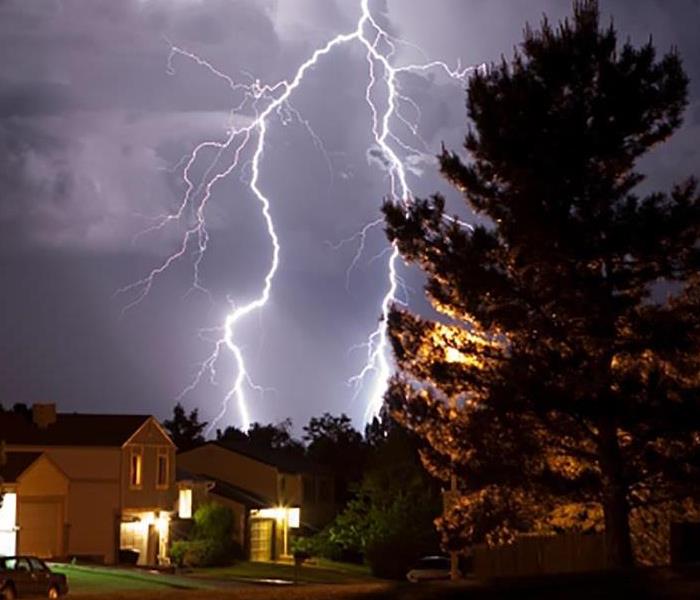Understanding Thunderstorms
5/6/2021 (Permalink)
 When a storm hits you need the company with storm damage experience & expertise - call SERVPRO of Benton, Jasper, Newton & Southern Lake Counties.
When a storm hits you need the company with storm damage experience & expertise - call SERVPRO of Benton, Jasper, Newton & Southern Lake Counties.
Thunderstorms can occur quickly and without warning at times. How exactly do thunderstorms form?
The Center for Science Education at the University Corporation for Atmospheric Research explains that most thunderstorms form with three stages: cumulus, mature, and dissipating.
Cumulus Stage - This is where the clouds start to form. Warm, moist air moves upward and forms puffy clouds. As it rises, the moisture in the air condenses into water droplets. The updraft of warm air can form when air is pushed up the side of a mountain or at weather fronts where warm and cold air masses collide. However, they often can occur just because warm air rises.
Mature Stage - As the cloud grows and more water droplets are added, the cloud starts to look dark and grey and becomes heavy. Raindrops start to fall through the cloud when the warm air rising can no longer hold them up. Air flows up and down through the cloud creating a thunderstorm cell and building up electrical charges. Those charges allow lightning to form. Thunder is the sound you hear when lightning strikes.
Dissipating Stage - When the downdrafts become stronger than the updraft, the storm starts to weaken. The storm dies out, usually with a light rain. Typical thunderstorms take about an hour to complete the process, but more powerful supercells and squall lines can last for several hours.
If you find yourself with water damage after a sudden thunderstorm, contact SERVPRO of Benton, Jasper, Newton & Southern Lake Counties at (219) 779-7577 to help assess and remediate the damage.






 24/7 Emergency Service
24/7 Emergency Service